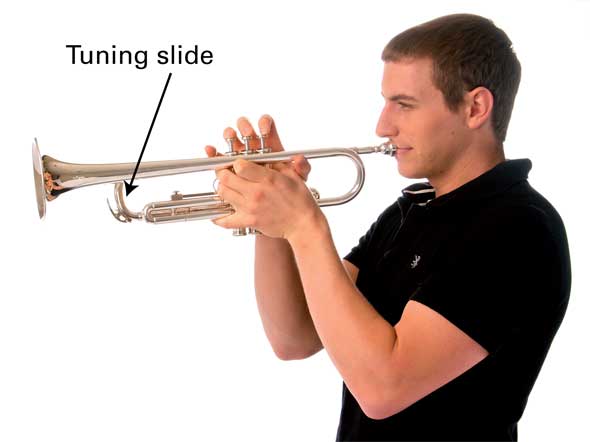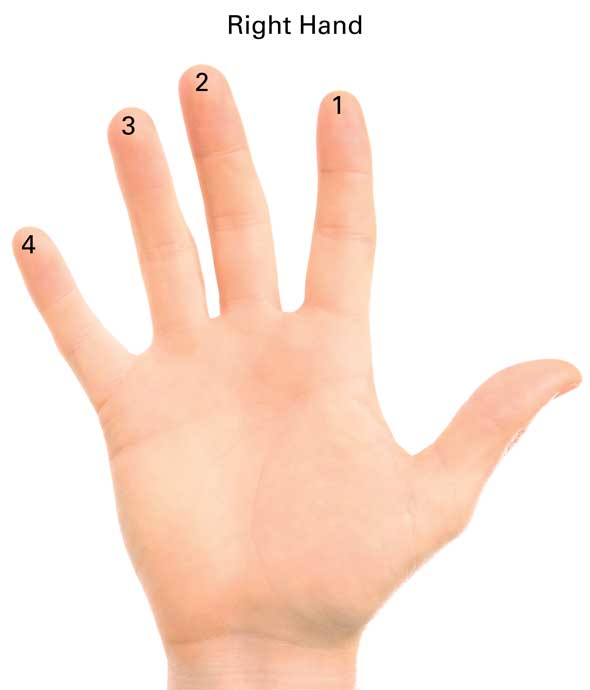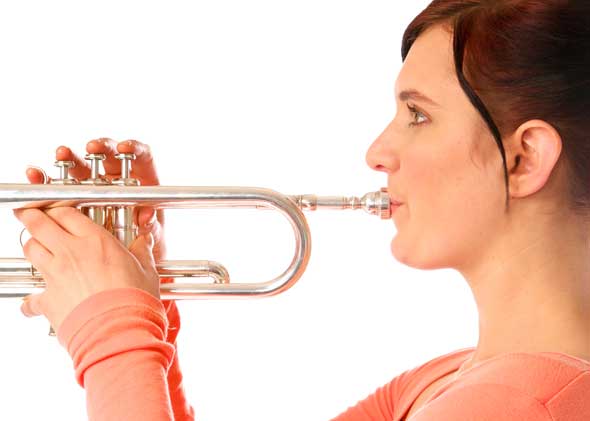
LESSON ONE
How To Hold The Trumpet
The left hand is used to hold the weight of the trumpet or cornet. Place your third or fourth finger through the ring on the tuning slide and hold the trumpet with your left hand.

The right hand is used to operate the valves which create the various notes, and to keep the instrument steady while you are playing it. There is a hook for your right hand fourth finger.
Fingering Numbers

The first three fingers of the right hand are used to play notes by pressing down the valves. The numbers on the illustration opposite correspond to the numbers used in the fingering diagrams throughout the book.
A black valve on the diagram indicates that it is pressed down with the finger shown by the number above it. Any valve not colored black is not pressed down. When a valve is not being used, the appropriate finger should still touch the valve lightly ready to press it down when necessary.
The Note C
The note C is played without any of the valves pressed down.

How To Sound A Note

Side view showing lower lip
Close your mouth and blow out through your lips, making a buzzing sound as you do so. Hold the mouthpiece against your lips so that the center area of your lips is against the cup of the mouthpiece.
Take a deep breath from your diaphragm and blow into the trumpet, making the buzzing sound with your lips at the same time. You may find that it is possible to make several different notes. Practice playing the lowest note, which is a C note.
Tonguing
To control the beginning and end of a note, a technique known as tonguing is used. Without the trumpet, whisper the sound "taa". Notice that your tongue starts at the back of your top teeth, and you make the "taa" sound by quickly withdrawing it, and letting a stream of air begin from your outgoing breath.
Now place the mouthpiece against your lips. Let your tongue remain lightly between your lips, closing off the stream of air, as you build up pressure in your mouth. Quickly release your tongue, and the note will start, definitely and crisply. To stop the note, simply put your tongue back against your lips. The note will stop immediately, and your tongue will be in position to start the next note.
With the trumpet against your lips, try the "taa" sound on the note C. Practice until you can easily play C every time you try. This may take a while, so don’t get frustrated if you can’t do it consistently at first. Practice for short periods at a time and it will get easier as your lips and facial muscles develop.